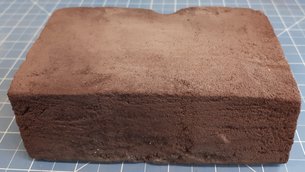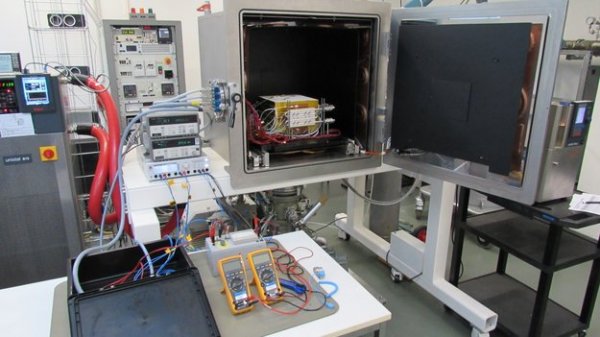Establishing a lunar base will be one of our next logical steps in exploring the solar system, but the future survival of astronauts depends on the availability of reliable energy. A European Space Agency discovery and preparation study explored how the weathered layer of the moon ’s surface—dust, soil, and rocks on the moon ’s surface—is used to store heat and provide electricity for future astronauts, rover, and landers .
With today ’s technology, humans will have no difficulty reaching the surface of the moon, but carrying all the materials we need is expensive and sometimes impossible, especially if we want to stay for more than a few days. For sustainable, long-term exploration, we should turn our attention to the local resources of the destination. As part of this effort, Discovery & Preparation recently supported aerospace specialist Azimut Space (formerly Sonaca Space) to investigate whether it is possible to manufacture "regenerator bricks" from the surface of the moon.
In space, energy usually comes from solar panels. When the sun shines on the panels, the panels can provide electrical energy almost instantly. But residents living on the moon may spend up to 16 days in the dark on the moon. Finding a sustainable energy solution that collects sunlight during the long day of the moon and stores it for night use is critical to realizing the prospect of long-term moon residence.
Weathered bricks provide a way to store solar energy during the day, so they can generate electricity at night; this is critical for anyone living and working on the moon. The stored heat can also be released directly, allowing the robotic device to maintain a sufficient temperature to work in the dark for a long time.

Homemade weathered brick, 14 cm long.
"Apollo astronauts brought back a small amount of lunar rocks, allowing us to create very similar 'fake' lunar surfaces on Earth," Aidan Cowley (Aidan) of the European Space Agency's Human Space and Robot Discovery Council Cowley) explained. "In this study, we used earth rocks similar in nature to lunar rocks and crushed them into powder until the particle size matched the size of the lunar weathering layer."
After making this powder into bricks, the research team injected energy into their simulated moon surface to see how much heat it could store. They also connected it to a heat engine, using the energy stored in it to generate electricity.
Azimut Space project manager Luca Celotti explained: "Any moon-based technology will face incredibly harsh conditions-long nights, temperatures from minus 173 degrees Celsius to 127 degrees Celsius, and extremely low pressure." "We mimic these conditions as much as possible to create a 'moon-like' environment for our bricks."

Artificial weathered bricks in the vacuum chamber, simulating the low pressure and extreme temperatures that astronauts and technology will face
"Using the weathering layer of the moon to store heat on the moon will provide us with a lot of ready-made materials, which means that space travelers do not need to take too much from the earth." Ultimately, this will enable more ambitious space missions to be carried out . "
Since the imitated weathered layer works very well, the research team will make this process more efficient and expand it to further study whether the weathered layer brick can produce the required energy.
Luca concluded: "This is just the first step in creating an innovative and sustainable method of heat storage and power generation, which can make it possible for us to reach the moon."
Using local materials helps us enter sustainable, permanent exploration, bringing opportunities that are cheaper, safer, and easier to enter space. The weathered layer of the moon can be used not only for heat storage and power generation. This large amount of material that exists on the moon can also be used to build future habitats, as a source of oxygen or minerals, and can even be used to make everyday items such as tools.
Partial Reflector,Dual High Reflectors Mirror,Triple High Reflectors Mirror,High Reflector Mirror
Lambda Research Optics ChangChun,LTD. , https://www.lambdachina.com